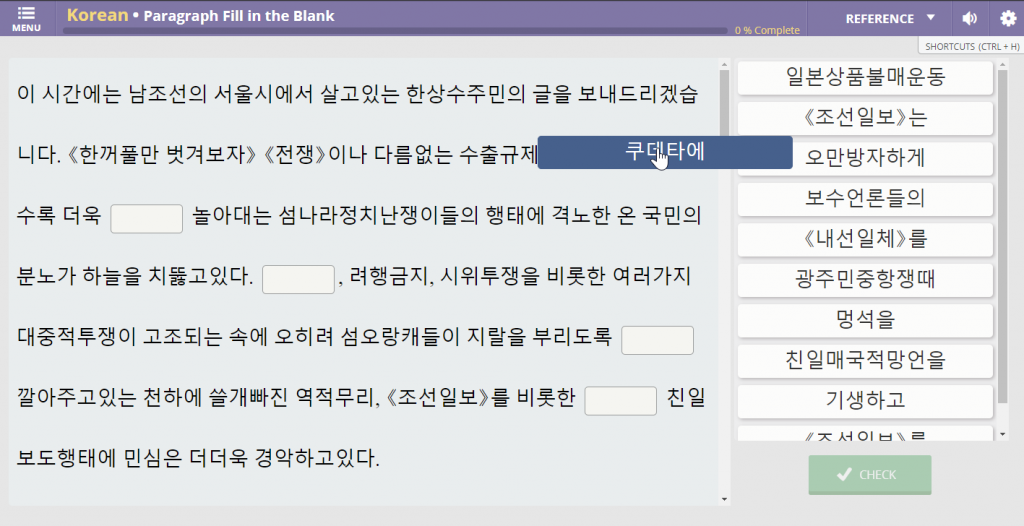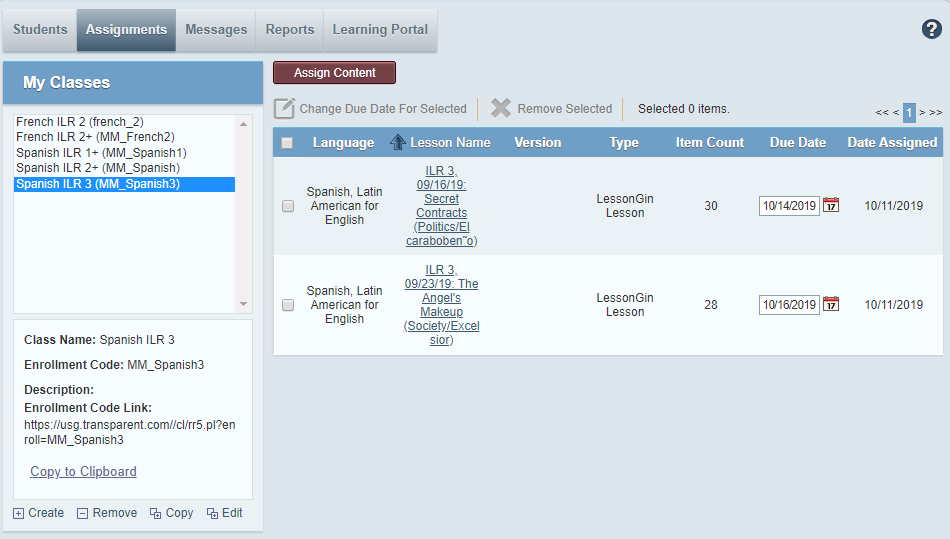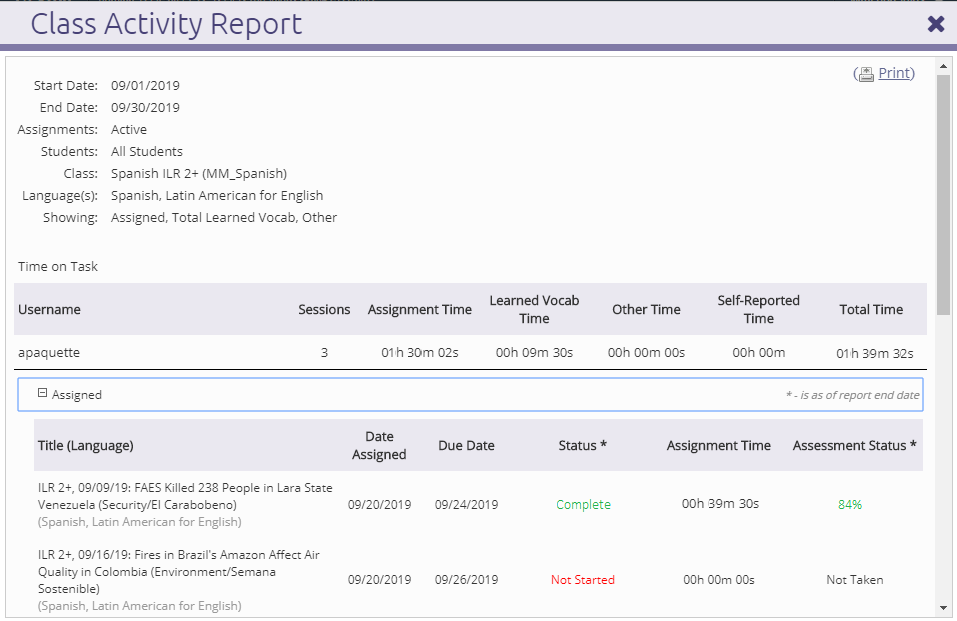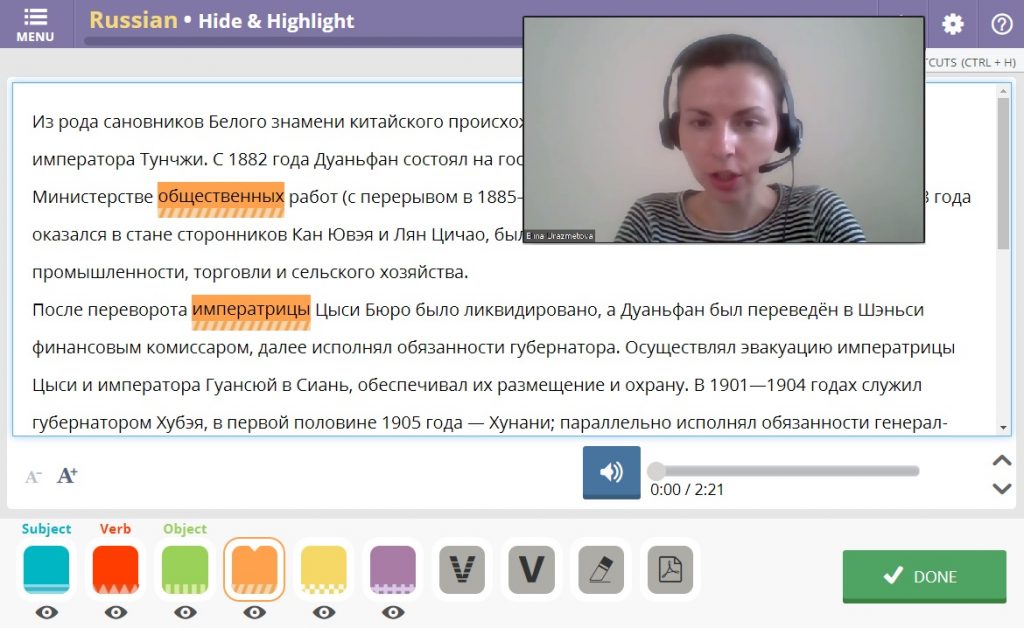You’ve set up your virtual classroom. Now what? Posted by meaghan on Apr 9, 2020 in For Instructors, Pedagogy
So you’ve got your students set up in a virtual classroom—but now what?
Online instruction is more complicated than gathering in a virtual classroom using Zoom or Skype and “teaching as usual.” Not all classroom activities transfer well to in a virtual space. On the other hand, virtual engagement and technology open up new possibilities.
How can language instructors best engage and encourage students, monitor participation, track performance, and ensure success from afar?
Our Connect instruction team has been delivering remote language instruction for nearly a decade. This is how we do it:
1. Digitize it.
If you’re instructing online, technology presents some short-term obstacles—connection problems, getting familiar with various tools and features—but in the long term it’s an opportunity! Let tech do what it does best, so you can do what you do best in the live virtual classroom. We’ve found that tech excels at providing information and driving retention, so we mostly use digital lessons to build vocabulary, introduce explicit grammar, inform cultural context, etc.
Our instructors use the CL-150 Platform Lesson Authoring tool to create digital lessons at any level, on any topic, in 130+ languages. Lessons are tightly aligned to the course curriculum and are usually based on a key vocabulary list or a reading passage. You can choose from more than two dozen learning activities that build vocabulary, grammar, and skills in all four modalities (listening, speaking, reading, and writing) and customize the activities as desired.

You can do the same—quickly build lessons for the day or week by bringing in source texts for your textbook or other resources, then leveraging the different learning activities available to teach all aspects of the language in your lesson.
2. Flip it.
We’ve found that interweaving tech-delivered lessons with live instruction, a type of “flipped classroom” approach, works best for online language instruction. We call our approach DABL.
In a part-time, one-hour class, this typically involves students completing the digitized lessons as pre-class prep work, so everyone comes to the virtual class time ready to engage and interact.
In a full-time program, where classes can be up to six hours long, the tech lessons can be integrated into the training day as needed. Students can all do lessons together during a dedicated block to of time, which breaks up the training day. Then, students can all come back together to immediately discuss the lesson.
Or an even more sophisticated approach is to have different students do tech lessons at different times. At any given time in the best classroom one student might be working on a task, a pair might be preparing a presentation, another might be working one-on-one with the instructor, and another might be working on the tech lesson for that session.
The class management tools in the CL-150 Platform make it easy to assign authored lessons to an entire class, set due dates, and send messages with just a few clicks, so students know exactly what is expected of them.

Not only does tech make it easy to create and assign lessons, it tailors the same lesson differently to each student. Spaced repetition algorithms adapt to each student’s learning, spiraling the material and showing learners words or phrases they struggle with more often than those they clearly know well. Some students may complete a lesson in 30 minutes, while others might need 45 minutes or more to make it through the same activities because they need more repetitions. Different students will take longer with different parts of the lesson—but the differentiation happens automatically without any extra instructor time.
3. Track it.
How will you know that your students did the work?
One of the benefits of going digital is the data you can gather. Since you’re assigning lessons as prep work, you probably want to know who did the lesson and how well they did. That way you can plan class time accordingly and be sure to engage students who struggled, partner up students who did well with those who didn’t, and apply other similar strategies. This level of targeting actually becomes easier with blended instruction in a virtual environment!
All learning activity in the CL-150 Platform is automatically tracked. You can run a Class Activity Report to see detailed information on each student, including lessons completed, time spent, and assessment scores.

4. Build on it.
Like you, we want instructors doing what they do best in the classroom—observing, managing, and personally leading many of the interactive, communicative activities. Students use accrued vocabulary and skills plus this lesson’s new lexicon, grammar and cultural information to perform skits, roleplay, discuss current events, and so on.
In a class of four students, you don’t want one student engaged while the other three sit idle! DABL classrooms are designed to engage all students in the language.
For example, each student will complete a digital lesson about a recent controversy in the target region, either as prework or as you direct during the training day. You organize them into pairs using Zoom breakout rooms. Each pair chooses one side of that controversy and prepares to support their side in a debate. You float between the two breakout rooms to help as needed before bringing everyone back together to stage the debate. Then on to other activities with other groupings. It’s a tiring day that good teachers and good students love, and that reliably keeps less diligent learners highly engaged as well.
As students use the language, you see what they don’t understand—just like your physical classroom, but now with better tools to address the needs of each individually.

5. Repeat it.
Continue this cycle of highly relevant pre-class work and engaging in-class work! With the tech differentiating the pre-class work and your time freed up to lead fun, communicative activities in the virtual classroom, your students will reliably achieve their objectives on time. Or as our experience suggests, even more quickly.
And we know you want the learning to stick! After your course, the CL-150 can deliver personalized daily challenges via email, text etc., to keep the learning fresh and prevent proficiency loss career-long.
Want to learn more about our approach and implement it in your virtual classroom? Download our free DABL Implementation Guide.
If you’re currently using the CL-150 Platform with your language classes and want to share your experiences or learn more about how the CL-150 supports flipped instruction, contact us at usg@transparent.com.


